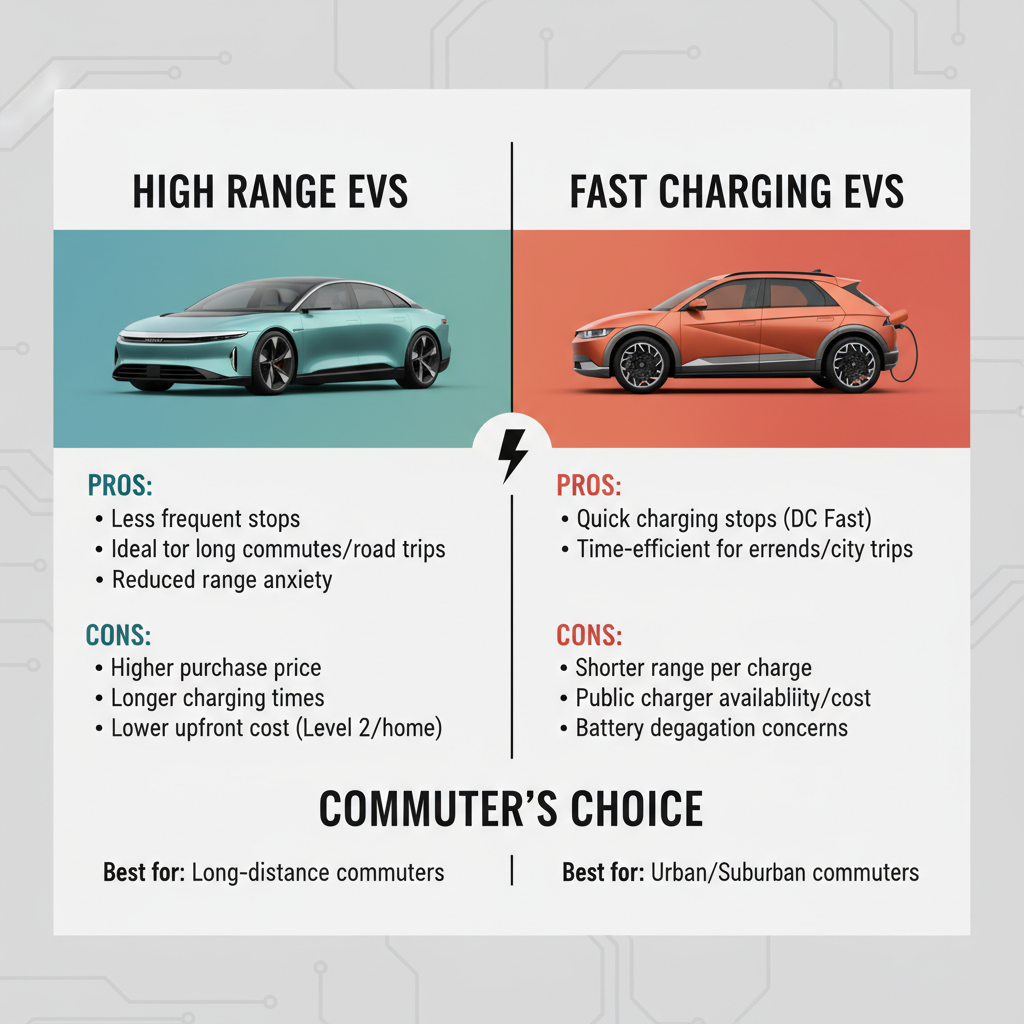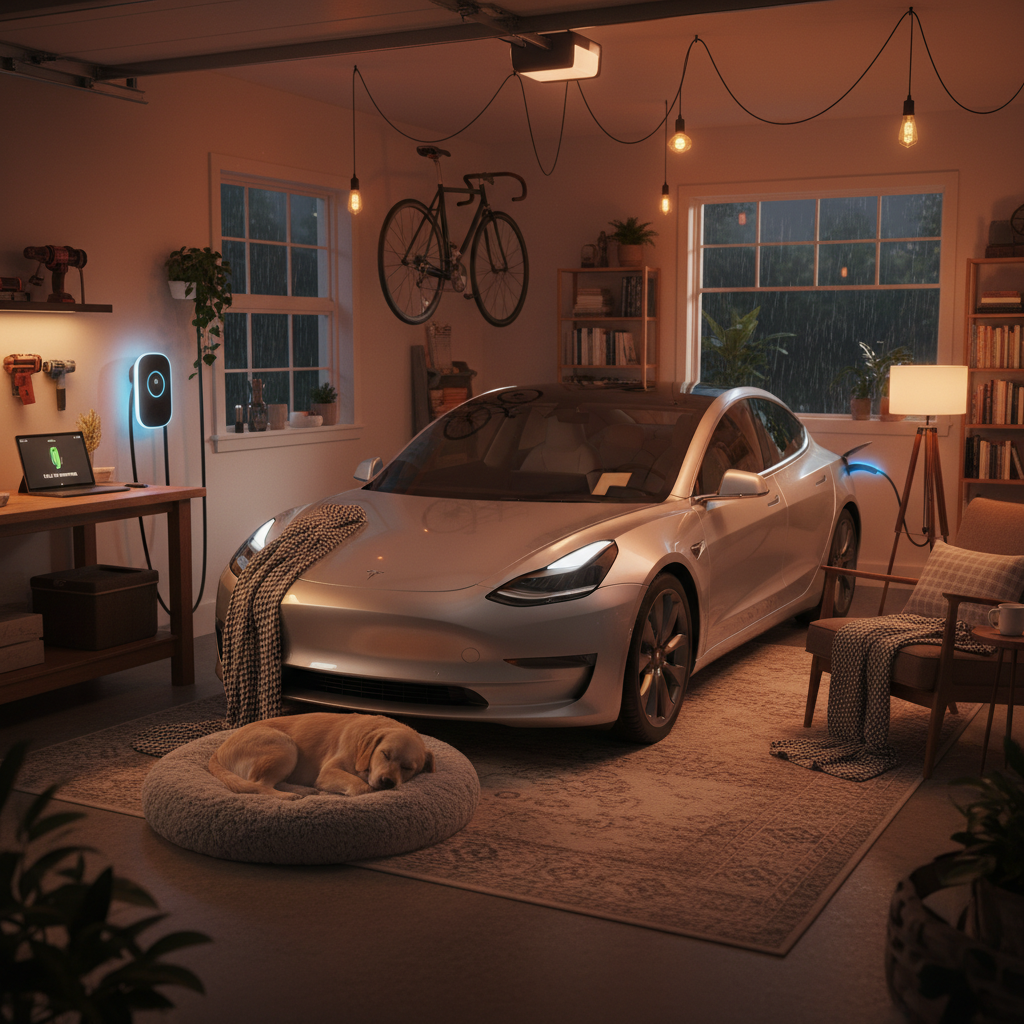Charging vs Range: The No-Regrets Guide to EVs for 100+ Mile Daily Commuters in 2025
Long-distance EV commuting in 2025 isn’t just about a big number on a spec sheet. If you’re clocking 100–150 miles a day, your total cost of ownership, daily convenience, and even your stress levels come down to one key decision: Should you maximize your EV’s range, rely on fast charging, or set up your life for seamless home or workplace charging?

Contents
- 1 Why Your EV Setup Matters More Than the Car’s Range Alone
- 2 Scenario 1: Maximize Range—Drive All Week, Charge on Weekends
- 3 Scenario 2: Fast Charging—Smaller Battery, Lower Price, More Stops
- 4 Scenario 3: Home/Work Charging—Range Anxiety Be Gone
- 5 Commuting Distance vs. Real-World Range: Calculating Your Buffer
- 6
- 7 Latest 2025 Trends: Why Charging Infrastructure May Trump Range
- 8 Action Steps: How to Build Your Perfect EV Commuting Setup
- 9 Don’t Miss Out: High-Demand Models Are in Short Supply!
- 10 Ready for Hassle-Free Long-Distance EV Commuting?
Why Your EV Setup Matters More Than the Car’s Range Alone
In 2025, buyers face a paradox of choice. Yes, you can grab a Lucid Air Grand Touring with a 512-mile range (if you have nearly $100,000), but for most, real-world factors like charge speed, charging access, and vehicle price weigh heavy. According to recent reviews, the best EV for a long daily commute isn’t always the one with the biggest battery—it’s the one that fits your charging habits and your budget best[1][2][4]. Ignore this, and you risk paying thousands more for range you rarely use, or suffering daily range anxiety.

Scenario 1: Maximize Range—Drive All Week, Charge on Weekends
Who This Works For
- Commuters with limited charging options at home or work
- Those who prefer to charge just once a week
- Anyone with frequent detours, errands, or unpredictable schedules
What You Need
- EVs with 350+ mile EPA range
- Ideally, battery pre-conditioning for fast DC charging
Top 2025 Models (U.S. Pricing)
- Lucid Air Grand Touring: 512 miles | ~$95,000[1]
- Tesla Model 3 Long Range: 363 miles | $42,490[1][6]
- Kia EV9: 349 miles | $65,025[2]
- Hyundai Ioniq 6 SE RWD: 300 miles | $42,700[1][6]
- Skoda Enyaq: 348 miles | $36,970 (UK pricing)[2]
With these, a 120-mile roundtrip commute means you’ll have a buffer for weather and battery degradation, charging just once every 2–3 days or even weekly.
Scenario 2: Fast Charging—Smaller Battery, Lower Price, More Stops
Who This Works For
- Commuters with access to reliable DC fast chargers along their route
- Those who don’t mind (or even enjoy) a quick coffee during a 15–20 minute top-up
- If your employer’s parking lot has high-speed chargers
What You Need
- EVs with ultra-fast charging (15–20 min 10–80%)
- Battery size of 200–250 miles may suffice
- Membership in major charging networks (e.g., Electrify America Pass+ is $7/month for discounts)
Top 2025 Models for Fast Charging
- Hyundai Ioniq 5: 350kW charging, 10–80% in 18 minutes | 354 miles | $39,900[2][4]
- Kia EV6: 310 miles, 10–80% in ~18 min | $45,950[1][3]
- Ford Mustang Mach-E Premium: 300 miles, 10–80% in ~33 min | $39,995[1][4]
Strategically, you can save $5,000–$10,000 by choosing a smaller battery. But beware: if your commute is through charging deserts or you’re pressed for time, this scenario can backfire.

Scenario 3: Home/Work Charging—Range Anxiety Be Gone
Who This Works For
- Commuters with a driveway, garage, or guaranteed workplace charging
- Ability to install a Level 2 (240V) charger (installation: $800–$1,500; charger: $400–$800)
- Shorter, predictable commutes (100–150 miles/day)
What You Need
- EVs with 200–250+ mile range
- A reliable Level 2 charger (e.g., ChargePoint Home Flex: $749)
- Optional: smart charging app to schedule overnight charging for lowest electricity rates
Budget-Friendly 2025 EVs for Home Charging
- Hyundai Kona Electric SE: 200 miles | $32,875[1][2]
- Chevrolet Equinox EV FWD: 319 miles | $41,100[1][3]
- Nissan Ariya Venture+ FWD: 304 miles | $41,190[1]
- Peugeot E-2008: 250 miles | $32,390[2]
With daily top-ups at home or work, you can run a lower-range EV and never see a public charger.
Commuting Distance vs. Real-World Range: Calculating Your Buffer
Don’t trust the EPA number blindly. Experts advise a 20% buffer for worst-case scenarios: cold weather, battery age, detours, etc. For a 120-mile commute, target at least 150 miles of reliable usable range. Here’s how to calculate your real buffer:

- EPA Range × 0.8 = Usable Real-World Range
- Plan for one recharge per 2–3 days if charging only at home
- Consider resale: EVs with higher usable range depreciate less
Latest 2025 Trends: Why Charging Infrastructure May Trump Range
According to Kelley Blue Book and recent market data, the number of public DC fast chargers in the U.S. has grown by 32% in 2024–2025, with major highway corridors now covered by 350kW chargers[6]. Charging apps are smarter—apps like PlugShare and A Better Routeplanner now offer real-time availability and route planning based on your EV’s range. Even luxury models are integrating route-optimized charging stops by default.
But, battery prices have plateaued. That means ultra-long-range EVs still command a steep premium, while fast-charging, mid-range models now hit the sweet spot for cost and practicality.
Action Steps: How to Build Your Perfect EV Commuting Setup
- Map your commute and identify charging options at home, work, and en route (use PlugShare, Google Maps EV filter).
- Calculate your real-world range need: Daily miles × 1.2 = minimum useful EV range.
- Test drive both high-range and fast-charging models—not all charge rates are equal, and interior comfort for long stints matters!
- Get pre-approved for EV rebates or tax credits (e.g., U.S. federal $7,500, state/local incentives).
- Decide on your charging solution: Level 2 charger at home ($1,000–$2,000 installed), workplace charger, or reliable public fast charging.
- Buy or lease your EV—many brands now offer flexible leases with battery health guarantees.
Don’t Miss Out: High-Demand Models Are in Short Supply!
FOMO alert: Models like the Hyundai Ioniq 5/6, Tesla Model 3 Long Range, and Chevrolet Equinox EV are facing months-long waitlists in many states. Dealers are reporting markups on the highest-range trims. Secure your build slot or test drive ASAP!
Ready for Hassle-Free Long-Distance EV Commuting?
The smart commuter in 2025 doesn’t just buy an EV—they design a charging strategy. Whether you go for a range monster, a charging ninja, or a flawlessly integrated home charging setup, the right combination guarantees zero range anxiety and the lowest real-world cost per mile.

Test drive your shortlist, get your charger installed before delivery, and claim every incentive now—before the next price hike or supply crunch hits.


